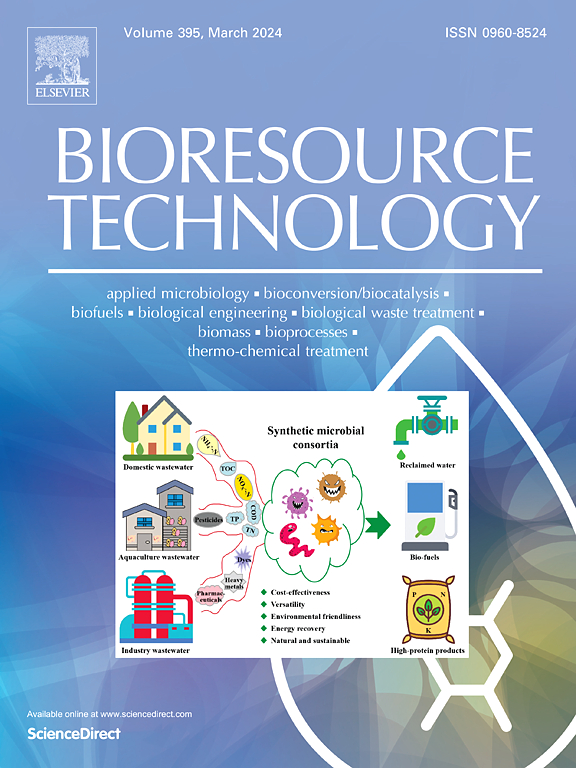Characteristics of N-acyl homoserine lactones secretion in short-chain fatty acid co-metabolic methane production system influenced by ecological factors and its microbiological mechanisms
IF 9.7
1区 环境科学与生态学
Q1 AGRICULTURAL ENGINEERING
引用次数: 0
Abstract
The effective enhancement of short-chain fatty acid co-metabolic methane production is a research hotspot. N-acyl homoserine lactones (AHLs) are effective means regulating anaerobic digestion behaviors. However, what factors influence the secretion of endogenous signaling molecules has not been studied. We established a propionic acid co-metabolic methane production system to examined how ecological factors affect AHLs secretion. We found that propionic acid concentration negatively correlated with C4-HSL secretion (-0.71 for R). Ammonia nitrogen positively correlated with C4-HSL secretion at low 100–1000 mg/L (0.89 for R), and negatively correlated at 1000–6000 mg/L (-0.95 for R). While pH positively correlated with C6-HSL (0.76 for R). Syntrophobacter, Syntrophorhabdus, and Methanospirillum significantly affected C4-HSL secretion. We also demonstrated a significant correlation between signaling molecules, syntrophic bacteria, hydrogenotrophic methanogens, and maximum methane production. Our study provided a new understanding for the future research of using AHLs to regulate the metabolism of syntrophic bacteria for methane production.

求助全文
约1分钟内获得全文
求助全文
来源期刊

Bioresource Technology
工程技术-能源与燃料
CiteScore
20.80
自引率
19.30%
发文量
2013
审稿时长
12 days
期刊介绍:
Bioresource Technology publishes original articles, review articles, case studies, and short communications covering the fundamentals, applications, and management of bioresource technology. The journal seeks to advance and disseminate knowledge across various areas related to biomass, biological waste treatment, bioenergy, biotransformations, bioresource systems analysis, and associated conversion or production technologies.
Topics include:
• Biofuels: liquid and gaseous biofuels production, modeling and economics
• Bioprocesses and bioproducts: biocatalysis and fermentations
• Biomass and feedstocks utilization: bioconversion of agro-industrial residues
• Environmental protection: biological waste treatment
• Thermochemical conversion of biomass: combustion, pyrolysis, gasification, catalysis.
 求助内容:
求助内容: 应助结果提醒方式:
应助结果提醒方式:


